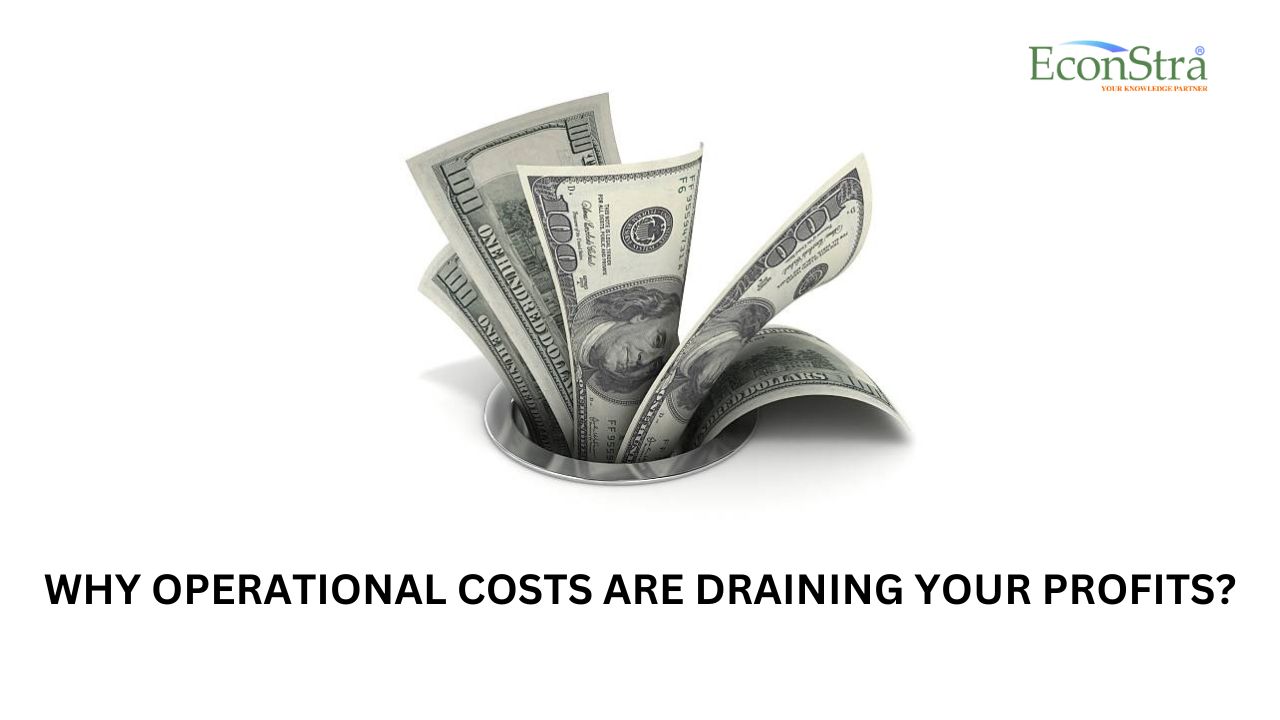by Subhadeep Chowdhury
Share

In the ever-evolving landscape of business, staying competitive and relevant is imperative for long-term success. To achieve this, organizations often need to adapt, streamline, and revitalize their operations. This is where Business Process Reengineering (BPR) comes into play – a transformative approach that has been reshaping industries since its inception.
So, here, today, in this comprehensive guide, we will delve deep into what Business Process Reengineering is, why it is essential, and how it can drive positive change within your organization—strap in as we explore the powerful methodology that can unlock efficiency, innovation, and profitability.
What is Business Process Reengineering?
So what is What is Business Process Reengineering? Business Process Reengineering, often abbreviated as BPR, is a strategic management technique aimed at radically redesigning and optimizing existing business processes to achieve substantial improvements in performance, efficiency, and overall effectiveness. The concept emerged in the early 1990s and gained widespread recognition thanks to the groundbreaking work of management experts James Champy and Michael Hammer.
At its core, BPR challenges the traditional notion of incremental improvement and instead advocates for a complete overhaul of processes. It involves a holistic review of an organization’s workflows, from start to finish, with the primary goal of achieving dramatic enhancements in productivity, cost reduction, quality, and customer satisfaction.
To better understand the essence of BPR, let’s explore its key components and principles.
Also read: Effective Solutions For Business Management Problems
Key Components of Business Process Reengineering:
Process Redesign: The heart of BPR lies in rethinking and redesigning existing processes from scratch. This entails questioning every step, eliminating redundant activities, and integrating technology where beneficial. The objective is to create a more streamlined, efficient, and agile workflow.
Cross-functional Teams: BPR often involves breaking down silos and establishing cross-functional teams that can collaborate seamlessly. This encourages a holistic view of processes and helps identify bottlenecks or inefficiencies that may not be apparent within departmental boundaries.
Information Technology Integration: Technology is a powerful enabler of BPR. Integrating advanced IT systems and software can automate tasks, enhance data accuracy, and provide real-time insights into process performance.
Customer-Centric Focus: BPR places a strong emphasis on understanding and meeting customer needs. By aligning processes with customer expectations, organizations can improve satisfaction levels and build long-lasting relationships.
Performance Metrics: BPR initiatives rely on defining clear performance metrics and Key Performance Indicators (KPIs) to measure progress and success. This data-driven approach allows organizations to track improvements and make informed decisions.
Benefits of Business Process Reengineering
Business Process Reengineering (BPR) is a strategic approach that has garnered widespread attention for its potential to transform businesses and drive positive change. By radically redesigning and optimizing existing processes, BPR offers a myriad of benefits that can significantly impact an organization’s performance, efficiency, and overall competitiveness. In this article, we will delve into the key advantages of Business Process Reengineering.
a) Enhanced Efficiency: At the core of BPR lies the quest for greater efficiency. By eliminating redundant steps, automating tasks, and simplifying workflows, organizations can accomplish more with fewer resources and in less time. This heightened efficiency translates into reduced lead times, quicker response to customer demands, and improved productivity. Employees can focus on value-added tasks rather than being bogged down by manual and time-consuming processes.
Also, read our article on Tips for Business Process Automation
b) Cost Reduction: One of the most tangible benefits of BPR is cost savings. Streamlining processes and removing unnecessary activities can lead to a significant reduction in operational expenses. These savings can be realized through reduced labor costs, lower material and resource consumption, and a decrease in error-related expenses. As a result, organizations can allocate resources more efficiently and invest in strategic growth initiatives.
Also read: How Does Business Automation Help In Cost Reduction?
c) Improved Quality: BPR places a strong emphasis on the elimination of errors and defects in processes. By identifying and rectifying process inefficiencies, organizations can deliver higher-quality products and services to their customers. Enhanced quality not only boosts customer satisfaction but also reduces the need for rework and warranty claims, ultimately leading to cost savings.
d) Enhanced Customer Satisfaction: Customer-centricity is a fundamental principle of BPR. By aligning processes with customer needs and expectations, organizations can enhance the overall customer experience. Shorter lead times, improved product quality, and faster issue resolution contribute to higher customer satisfaction and loyalty. Satisfied customers are more likely to become repeat buyers and advocates for your brand.
e) Competitive Advantage: In today’s dynamic business environment, staying competitive is essential for survival. BPR enables organizations to respond swiftly to changing market conditions and customer demands. The ability to adapt and innovate is a significant competitive advantage. It allows companies to outmaneuver competitors, capture market share, and seize new opportunities as they arise.
f) Innovation and Agility: Business Process Reengineering encourages organizations to embrace innovation and leverage technology to their advantage. The integration of advanced IT systems and software can automate routine tasks, provide real-time insights, and facilitate data-driven decision-making. This technological agility allows businesses to adapt to new challenges, scale operations, and explore new revenue streams.
g) Alignment with Strategic Goals: BPR is not an isolated initiative; it should align with an organization’s strategic goals and objectives. When executed effectively, BPR can ensure that processes are in sync with the overarching mission and vision of the company. This alignment fosters a sense of purpose among employees and ensures that everyone is working towards common goals.
h) Empowerment of Employees: BPR often involves breaking down silos and promoting cross-functional collaboration. Employees are encouraged to share ideas and participate in the redesign of processes. This empowerment can boost morale, engagement, and a sense of ownership among the workforce. It also enables employees to see the direct impact of their efforts on the organization’s success.
i) Measurable Results: BPR relies on defining clear performance metrics and Key Performance Indicators (KPIs). This data-driven approach allows organizations to measure the impact of process improvements accurately. It provides insights into the effectiveness of the re-engineered processes and identifies areas for further optimization.
j) Adaptation to Market Changes: The business landscape is constantly evolving. BPR equips organizations with the flexibility and adaptability to navigate these changes effectively. Whether it’s a shift in customer preferences, emerging technologies, or new regulations, organizations that have undergone BPR are better positioned to respond and thrive.
NOTE:
Business Process Reengineering (BPR) is like giving a modern makeover to how a company does things. Imagine making your business smoother, faster, and smarter. That’s where Econstra comes in – they’re like the experts who know the secret sauce for making it happen. Econstra is a top-notch business consultant, and they bring in super cool systems to make your business run like a well-oiled machine. They understand that every business is unique, so they customize solutions that fit like a glove. Econstra uses smart technology to get rid of any wasteful stuff, cut costs, and make things work like a charm. If you want your business to be the talk of the town for all the right reasons, give Econstra a shout. They’re the buddies you need to take your business game to a whole new level with their savvy advice and high-tech solutions!
The Bottom Line On: What Is Business Process Reengineering
The journey into the realm of business process reengineering has been nothing short of illuminating. We’ve ventured into the heart of organizational transformation, discovering how the alignment of processes, technology, and human capital can unlock unprecedented efficiency and innovation. By embracing change and embracing the opportunities it presents, businesses can rejuvenate their operations, foster a culture of continuous improvement, and stay ahead of the competition.
Remember, innovation is not just about flashy gadgets or disruptive technologies; it’s about reimagining and optimizing the way we work. Business process reengineering offers a roadmap to streamline operations, reduce costs, and deliver superior value to customers. It’s a powerful tool for the future, allowing organizations to adapt and thrive in an ever-evolving business landscape.
So, as you embark on your journey towards unlocking efficiency and innovation through business process reengineering, remember that the possibilities are endless. With the right strategy and a commitment to change, your organization can rewrite its success story and set new standards of excellence. Embrace the future with open arms, and let efficiency and innovation become your guiding stars on the path to sustainable growth and prosperity.
STAY IN THE LOOP
Subscribe to our free newsletter.
Business consultant services provide the strategic insight and expertise necessary to steer your company through various challenges and opportunities. These professionals play a crucial role in helping businesses identify growth opportunities, optimize operations, and achieve long-term success. Understanding the Role of a Business Consultant A business consultant acts as an external advisor who brings a […]
In today’s competitive business landscape, companies are constantly seeking ways to reduce operational costs while maintaining or improving efficiency and customer satisfaction. Customer Relationship Management (CRM) systems have emerged as vital tools that enable businesses to achieve these goals. As a leading business consultancy, Econstra understands the importance of leveraging CRM technology to streamline operations, […]
Why Operational Costs Are Draining Your Profits? Operational costs are a critical aspect of running a successful business, but when not managed properly, they can drain your profits and stifle growth. In a competitive market, maintaining profitability requires keen oversight of expenses and strategic planning. Econstra, as a leading business consultancy, provides insights and strategies […]
In the rapidly advancing digital landscape, Artificial Intelligence (AI) tools have emerged as transformative assets for businesses. Their potential to enhance efficiency, streamline operations, and drive innovation makes them invaluable for business consultants and organizations worldwide. For business consultants in India, AI’s strategic application can be particularly advantageous in navigating a diverse and dynamic market. […]





